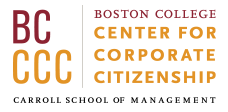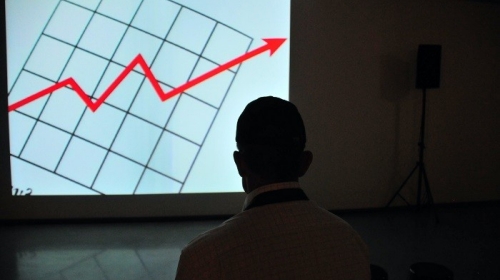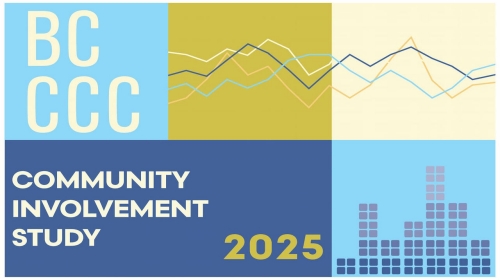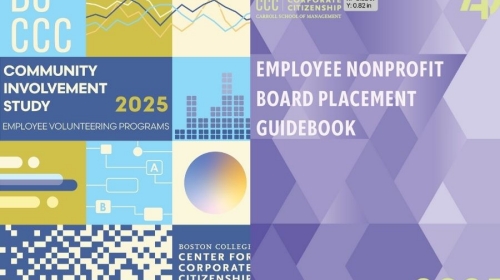WEBINAR: This webinar explores how to measure and communicate your organization's social impact with proven frameworks and strategies that matter to stakeholders.
Workplace Giving Best Practices
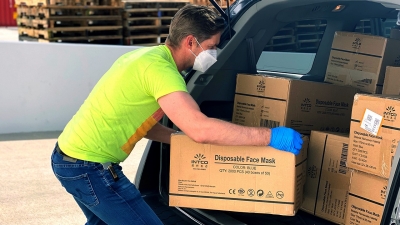
Just as volunteering can energize employee engagement, evidence shows offering workplace giving and matching gifts options can have a positive impact on employee attitudes toward their companies. But while 80% of companies offer a workplace-giving program for employees, with few common measures between them, such programs are sometimes referred to as the “wild west” of corporate giving.
Corporate citizenship practitioners, nonprofit organizations, and academic researchers observed the following best practices in workplace giving.
- Encourage giving year-round. The campaign will be open and available to employees on a year-round basis, but will include an enrollment and marketing period for several weeks once a year.
- Engage key stakeholders—such as leadership and employees—to determine focus areas. To drive business and social value, corporate citizenship professionals should take into account the interests and expectations of a variety of stakeholders—including their leadership and employees.
- Increase the ways employees can give back. Workplace campaigns are more often being connected with employee volunteer programs and matching gift programs. Employers will offer employees multiple types of opportunities to participate in charitable activities—either by giving of time or money. Companies increasingly match employee payroll deduction gifts made through the campaign or “dollars for doers” programs that offer corporate cash gifts to organizations where employees have volunteered in significant numbers or for significant amounts of time.
- Provide engagement opportunities for varying employee segments. Employees at different stages and levels are motivated to give and participate in corporate philanthropy and volunteer programs differently. Recognizing this, companies are offering more choice in their programs. Employees on a leadership track, for example, may be motivated to participate in a company’s philanthropic strategy for the recognition, the exposure to executives, and the leadership opportunities. More junior employees may be more inclined to give time and to participate in employee-directed activities.
- Leverage technology to drive engagement. The introduction of more choice certainly brings opportunity for companies and their employees to express shared corporate and personal values through workplace campaigns. Some of the innovations in campaigns that have been enabled by better technology have presented challenges to the traditional community affiliates. The level of engagement with federated giving organizations varies significantly by geography. Federated campaigns (and organizations) are not being abandoned, but they are being challenged to change the way that they solicit and operate.
- Understand the higher standards of accountability. The ability of donors to research and obtain information about charities will push the standards of accountability by charities to a higher degree of efficiency.
This is an excerpt from Trends in Workplace Giving Issue Brief, available to BCCCC members.
Members: Read our Issue Brief covering trends in workplace giving
Related Content
RESEARCH BRIEF - Researchers investigated how ESG activities help or hurt financial performance, using nine years of data from over 1,200 global companies.
RESEARCH BRIEF - Researchers analyzed 4 US energy exchange-traded funds (ETFs) over 15 years, including 2 dirty energy funds tracking fossil fuel companies and 2 clean energy funds tracking renewable energy companies.
RESEARCH BRIEF - Researchers conducted a survey, which measured perceptions of CSR and ethical leadership within the manufacturing and service industries.
WEBINAR: This webinar explores how corporate giving will be reshaped by the One Big Beautiful Bill. Hear directly from corporate citizenship leaders as they share innovative, real-world strategies that deliver impact for communities and results for business.
This study explores shifting trends in employee volunteering, corporate giving, and other means of corporate community involvement.
This guidebook offers insights on placing employees in nonprofit board service roles.
This study explores shifting trends in employee volunteering, corporate giving, and other means of corporate community involvement.
